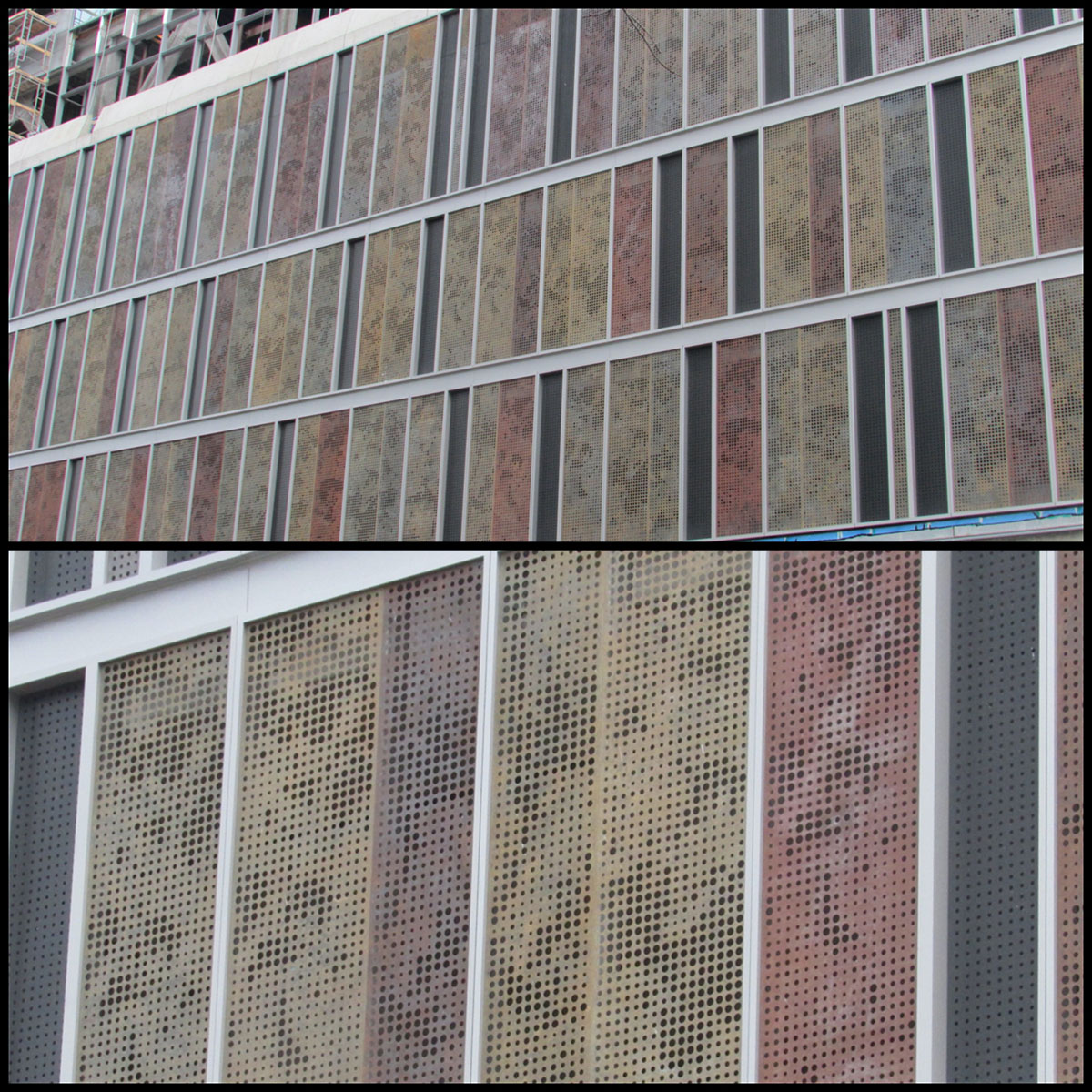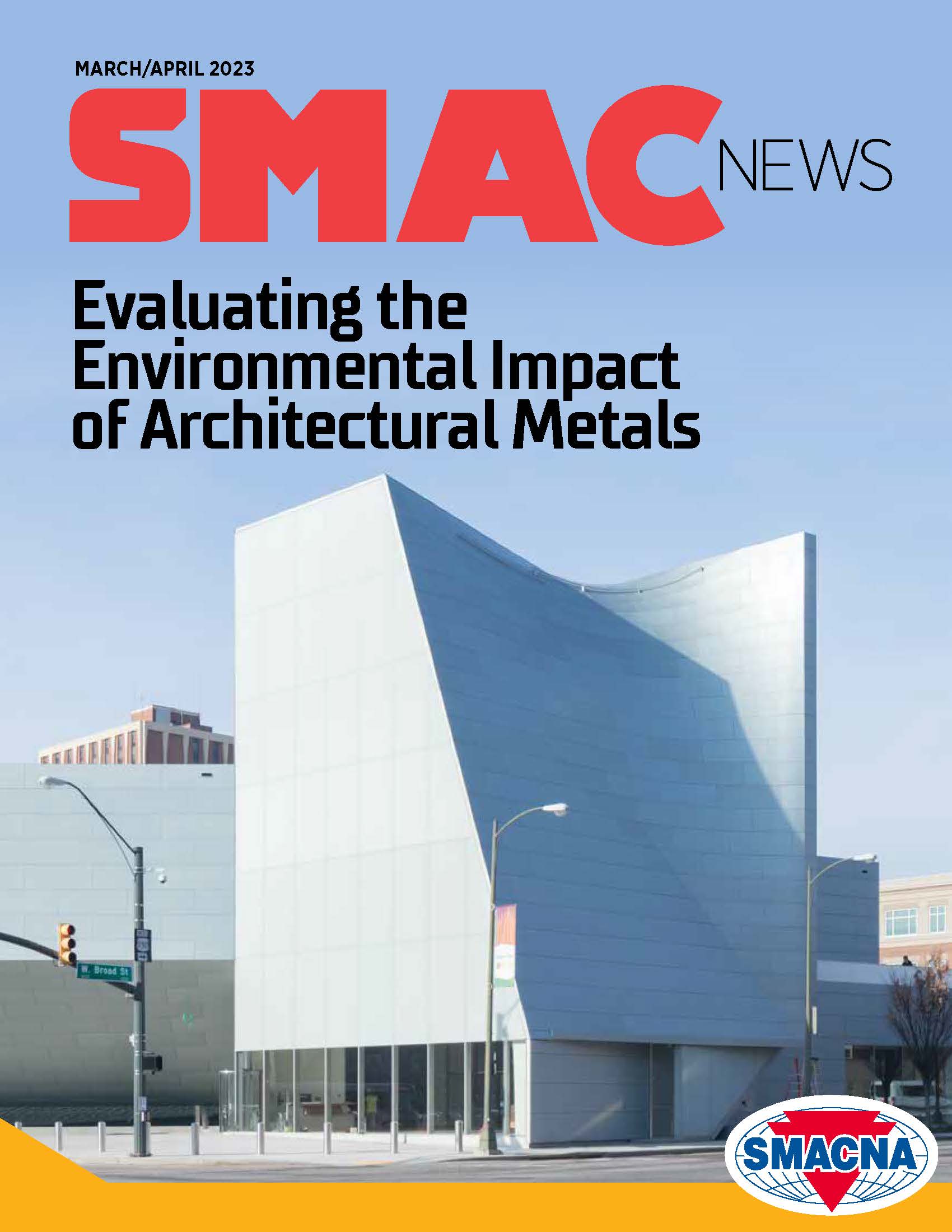Metal is a Low Waste, Sustainable Building Material
Sustainability is more than just an industry buzzword at Zahner. It's a daily commitment to preserving and protecting the natural resources we’ve been entrusted with and using them responsibly in the built environment.
Sustainability is more than just an industry buzzword at Zahner. It's a daily commitment to preserving and protecting the natural resources we’ve been entrusted with and using them responsibly in the built environment.
As building materials go, metals of all kinds are some of the most sustainable buiding materials available when considering their accessibility and recyclability. Not only are these materials environmentally responsible, but they are also economically strategic in their costs, longevity and durability.
Metal is lightweight, fire-resistant, and more durable than stone, wood or plastic. It’s also not susceptible to rot, insects or mold. Metal roofs and facades have been used for centuries in world architecture and are likely to be used for centuries more.
In addition to its beauty and durability, metal has other advantages as well when it comes to labor efficiency and construction waste.
Metal fabrication and assembly is usually done off site in controlled environments where milling, welding, surface treatments, and patinas can be carefully applied, recycled and remediated. Constructing with metal components normally results in less than 2 percent of construction waste, all of which can be recycled. Wood construction, on the other hand, can result in as much as 20 percent of construction waste, most of which typically ends up in landfills.
In terms of recyclability, metals such as steel, aluminum, and copper, once extracted in their pure mineral forms, can be used, and recycled indefinitely. Metal recycling can occur over and over without any change or diminishment of the metal’s properties. In fact, the three metals of steel, aluminum, and copper together are the most recycled materials in the world, surpassing all the tonnage of glass, plastic and paper combined.
Demonstrating and Investing in Sustainability Best Practices.
At Zahner, we strive to always meet and exceed environmental protection guidelines and standards, and we invest in the necessary operational controls and technologies needed to achieve those standards.
To that end, we’re proud to report that our manufacturing facility in Grand Prairie, Texas, was recently recognized for the seventh year in a row for its 100% compliance with pretreatment and environmental requirements related to effluent discharge limits, reporting requirements, stormwater discharge permit regulations and cross connection requirements.
This award requires discipline and constant vigilance. The Zahner Grand Prairie facility is audited several times a year by city and water authority officials who conduct both scheduled and surprise inspections. It only takes one deficiency in documentation, testing or operations to become ineligible for the award.
Our Grand Prairie facility is also the site of our latest investment in green manufacturing technologies, as it recently installed a new wastewater ion exchange system.
Water used in the production process for our world-renowned Surfaces must be treated and neutralized. In the past, these processing wastewaters have been collected in bulk containers and trucked away for safe disposal. While a common practice among manufacturers, it still results in thousands of pounds of wastewater that must be transported by rail, truck and other modes that consume fossil fuels.
With the new ion exchange system, rinse waters from patina baths are now recirculated and deionized to remove harmful solvents and turn them into an estimated 20lbs. of dry waste per year, as opposed to the tens of thousands of pounds of wastewater that were previously generated annually.
The benefits of the new system are numerous: less fresh water is needed, wastewater storage and hauling are reduced and gray water management is simplified.
Ongoing Commitment to Sustainability Stewardship.
We’ve actively developed and cultivated environmental health and welfare best practices in our fabrication, supply chain and operational standards. Here are a few additional examples of the steps we’ve taken to reinforce environmental protection and safe manufacturing:
- Clean Water: We seek to eliminate all preventable stressors on local water supplies by reusing and recycling wastewater used in cleaning, finishing and patination.
- Construction Waste Reduction: We use nested and programmatically defined cutting and crating practices, which reduce waste and shipping. All metal offcuts, including milling scraps and filings are collected and recycled.
- Clean Machining: We use recycled water for CNC water jet-cutting operations that filters out waste and recycles garnet.
- Wood Recycling: Wood crates used for shipping are collected and recycled. Zahner-designed reusable crates made of metal, rubber and wood are also being used wherever possible.
When it comes to sustainability, metal is a positive choice for designers seeking a dynamic, durable and beautiful material option for roofs, facades, interior accents and artwork. The aesthetic and cost benefits, combined with its infinite recyclability, make metal one of the greenest options available in the marketplace today.
Published: May 16, 2023
IN THIS ISSUE
Big Clients Require Big Partners
JPMorgan Chase & Co.’s global headquarters becomes AABCO’s next commercial HVAC client in NYC.
Bringing Shade to Schools
Intech helps install sheet metal shade structures at California schools.
Evaluating the Environmental Impact of Architectural Metals
Zahner talks about how the Life Cycle Assessment accounts for the environmental impact of metal material from its initial extraction through manufacture and use and on to the end of its designed useful life.
Exploring metal’s role in sustainable architecture
Metals are different from nearly all other materials used in our built environment. Once the useful life has ended, the metal is collected and recycled.
Going to Market
With advertising, 128-year-old Welsch Heating & Cooling Co. isn’t afraid to try new ways to reach their customers — as long as they work.
How to Prepare Your Business for Cyberattacks
Bulletproofing your business against a cyberattack can help protect you from today’s threats.
Metal is a Low Waste, Sustainable Building Material
Sustainability is more than just an industry buzzword at Zahner. It's a daily commitment to preserving and protecting the natural resources we’ve been entrusted with and using them responsibly in the built environment.
Sheet Metal Werks Shifts Field Hours to Shop Hours
The Illinois company saved significant man-hours by planning ahead.
SMACNA at the White House & SMACNA Endorses Bipartisan Bill on Substance Abuse
SMACNA was asked to be part of a policy roundtable on supply chain for highly efficient heat pumps and related decarbonization technologies that are key parts of whole house retrofits.
SMACNA Government & Technical Updates & Engagement Opportunities
The first quarter is always busy at SMACNA. We have lots of association events, our technical department is out in force, labor is starting its bargaining season and the government relations team is focused on many regulatory issues.
The Challenges With Manning Megaprojects
With the pandemic entering a new phase, construction has boomed with what are now widely known as “megaprojects.” Every day, it feels like there’s a new stadium, microprocessor factory or some other massive project getting underway. The demand for
Top Contractor Strategies for 2023, Part 2
In the last issue of SMACNews, I presented the first five of Grassi’s Top 10 Contractor Strategies for 2023. Those approaches to purchasing, procurement, prequalification, increased costs and project management are designed to cut through the noise
Understanding The Notice Requirements In Your CBA
For contractors with collective bargaining agreements (CBAs) expiring in 2023, it is important to remember that most CBAs, including the Standard Form, include an “evergreen” or “automatic renewal” clause.



